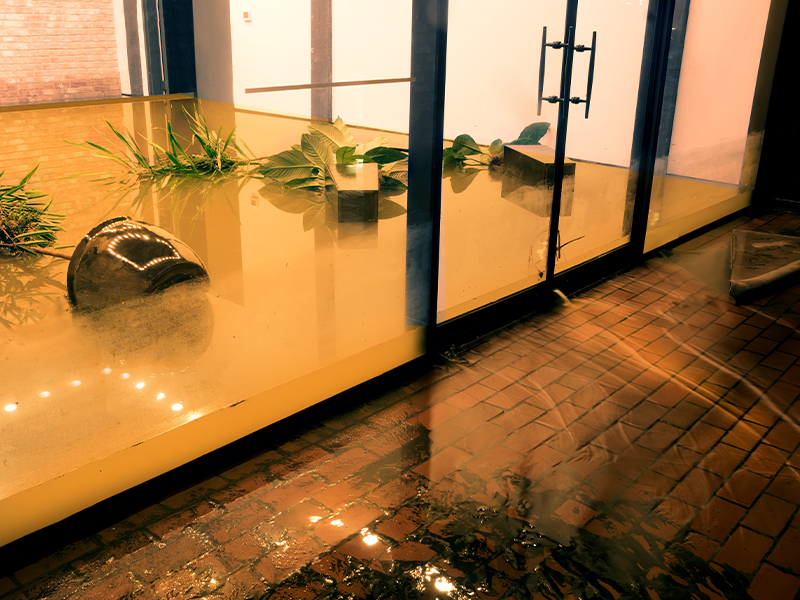
Proper preparation is a critical part of water damage restoration. Whether you are a professional contractor or a homeowner, knowing the proper steps to take when restoring water damage can help to minimize the cost and extent of the repairs. Taking the time and effort to assess the damage and initiate the proper steps to mitigate it can prevent secondary damage and long-term effects that can be caused by water damage. Basement water extraction services provide professional removal of water from basements, preventing damage and restoring dry, safe environments in homes. In this blog post, we will explore the importance of proper preparation in water damage restoration, how to assess the damage, and how to begin the restoration process. We will also discuss the benefits of hiring a professional contractor and what to expect when the project is complete. About Sarkinen Restoration brings order back to the chaos of your home after water damage caused by flooding, leaky pipes and appliances, overflowing fixtures. With the proper preparation and the right contractor, water damage restoration can be successful and your home or business can be restored in no time. Visit Website for the more tips about proper preparation in water damage restoration. Having your home damaged by water is never a pretty sight, and restoration could be more costly the longer it is delayed, as noted by DrierHomes. Do Go To Robinson Restoration.
1. Understanding the Source of Water Damage
Proper preparation is essential for a successful water damage restoration project. The first step in the process is understanding the source of the water damage. This could be due to a leaking pipe, a natural disaster, or a malfunctioning appliance. Each of these scenarios will require different preparation protocols to ensure the best possible results. For example, if the water damage is due to a natural disaster, it is important to assess the surrounding environment for possible contaminants that may have been brought in by the flooding. This is necessary to ensure that the area is safe for workers and residents alike. It is also important to understand when the damage occurred so that the restoration process can be tailored to the specific situation.

2. Determining the Extent of the Damage
After the source of the water damage has been identified, it’s important to determine the extent of the damage. This involves assessing the water damage to structural components such as walls and ceilings, flooring, furniture and personal items. To do this, a visual inspection must be completed to identify affected areas and note any signs of water, staining, discoloration and other types of damage. Moisture meters, infrared cameras and other specialized tools may also be used to assess the degree of damage. This is an important step to ensure that the most appropriate measures are taken to carry out the restoration process.
3. Removing Excess Water and Moisture
Once the source of the water has been identified and removed, the next step in water damage restoration is to remove any excess water and moisture. This is important, as any residual moisture can lead to the growth of mold and other potentially hazardous bacteria. The best way to remove excess water and moisture is through the use of specialized equipment such as dehumidifiers, air movers, and extraction devices. This equipment is designed to draw out moisture from the affected area, reducing the risk of further damage due to mold and bacteria. Additionally, these devices help to reduce the drying time of the area, allowing for faster restoration and saving time and money for the homeowner.
4. Drying Out Affected Areas
After removing standing water, the next step in water damage restoration is drying out affected areas. This is crucial to prevent microbial growth, such as mold and mildew, which can ruin furniture, clothing, and other items. The best way to dry out affected areas is to use fans and dehumidifiers. Fans help to circulate the air and evaporate the moisture; dehumidifiers draw moisture out of the air and trap it in a reservoir. Both of these methods should be used together in order to ensure that everything is completely dry and all potential contaminants are removed.
5. Disinfecting and Cleaning the Area
After the source of the water damage has been identified and stopped, the next step is disinfecting and cleaning the area. Mold and bacteria can continue to grow rapidly in a damp environment, so it’s essential to clean and disinfect the area as soon as possible. Start by removing any items that have been contaminated or damaged by the water and discarding them. Next, use a cleaning solution or disinfectant to thoroughly clean the affected area. To keep the area completely clean and safe, make sure to use a HEPA-approved vacuum cleaner to rid the area of any remaining dirt, dust, and debris. Finally, mop the area with a bleach solution and allow it to dry completely before putting any furniture back in place.
In conclusion, proper preparation is a key component of successful water damage restoration. It allows the professionals to work efficiently and reduces the risk of secondary damage from the water. Doing a thorough assessment of the damage and taking steps to properly prepare for the restoration process can make the difference between a successful project and one that has to be redone. Proper preparation is essential to ensure the best possible results when it comes to restoring a property after a water damage event.



